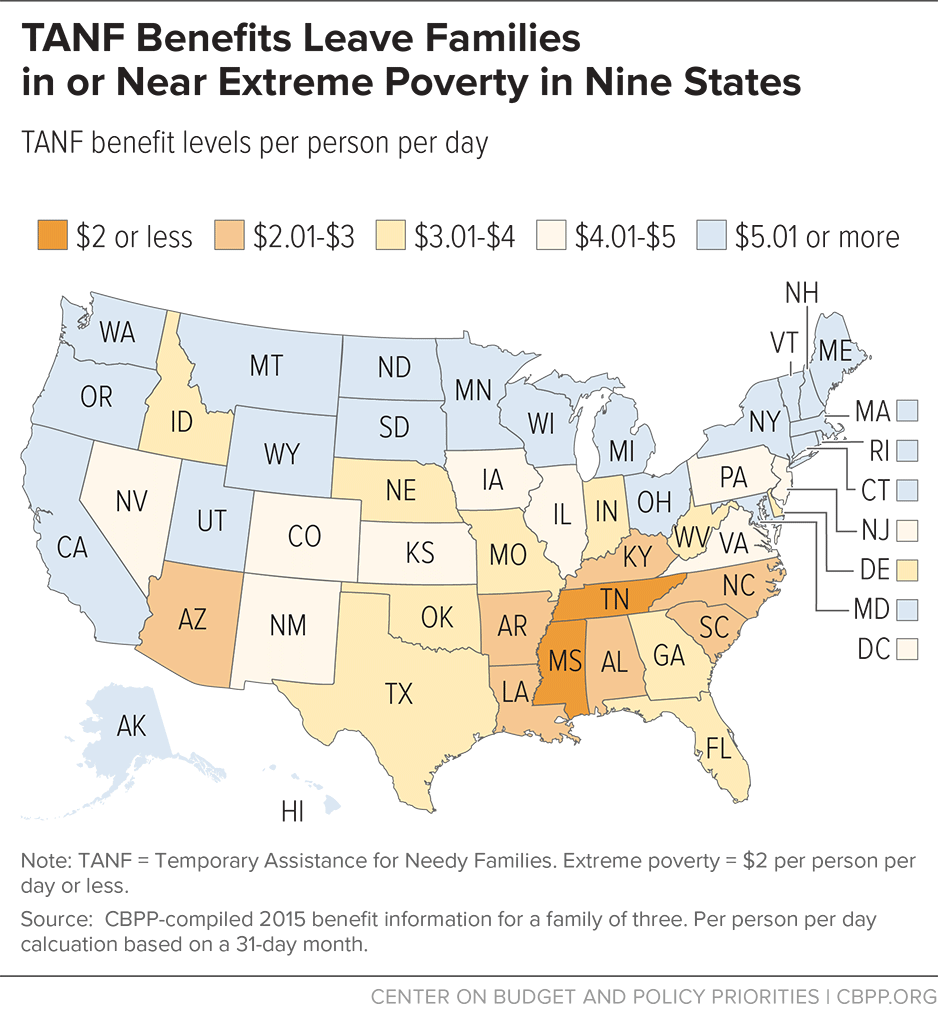BEYOND THE NUMBERS
Benefits under Temporary Assistance for Needy Families (TANF) don’t provide enough assistance in any state for families to meet their basic needs, and in nine states they leave families in or near extreme poverty, our newly updated paper shows.
Our findings come in the midst of research by Kathryn Edin and Luke Shaefer for their book, $2 a Day: Living on Almost Nothing in America, describing the devastating circumstances that extremely poor families face and tracing the rise in $2-a-day poverty (from 1.5 million children in 1996 to 3 million children in 2011) to the decline in the number of families receiving TANF.
In two states where Edin and Shaefer conducted their research — Mississippi and Tennessee — few families receive TANF, and those that do receive less than $2 per person per day.
- In Mississippi, only about ten families receive TANF for every 100 families with children in poverty. Mississippi’s monthly benefit of $170 for a family of three provides $1.83 per person per day in a 31-day month.
- In Tennessee, about 25 families receive TANF for every 100 in poverty. The monthly benefit of $185 for a family of three provides $1.99 per person per day in a 31-day month.
Cash assistance families in Alabama, Arizona, Arkansas, Louisiana, Kentucky, North Carolina, and South Carolina don’t fare much better. TANF benefits in those states provide between $2 and $3 per person per day (see map).
TANF’s very low benefits should concern those who want to provide a better future for poor children. A growing body of research highlights the importance of income — and the devastating impact of poverty — on children’s early development. Even modest increases in family income for young children in poor families can significantly improve their chances of succeeding in school and may have a big impact in adulthood as well.
States should invest more of their federal and state TANF funds in providing a safety net for poor families rather than diverting them to other purposes. They also should boost TANF benefits to make up the purchasing power they’ve lost over the years due to inflation and adjust benefits yearly in step with inflation to protect them from erosion.

